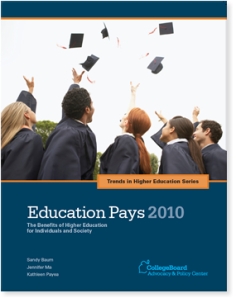There’s a shift in the higher education landscape. Or maybe it’s an expansion. If we look at the entire landscape of postsecondary education—and not only traditional degrees—the picture is big, dynamic, and evolving.
But most importantly, I believe, the system is inclusive. The new postsecondary landscape offers multiple entry points, many formats, recognition for different forms of learning, and the ability to compound learning over time. My first try with the following chart attempts to capture this environment.
The purple colored boxes represent what we have traditionally thought of as postsecondary education. These are various levels of college and university degrees, followed by some form of continuing education after degree attainment. (Any of these might be full-time or part-time, classroom-based or online.)
As you can see, this chart has a lot more than just the purple boxes.
At the top, in a red tone, are professional certificate programs. (I’ve also heard certificates referred to as “stand alone minors,” that is equivalent to a minor in a traditional degree.) These might be completed at any time during the postsecondary cycle of one’s life. One might start with a stand-alone certificate and work for a while. Then he or she might earn another related certificate and/or begin a degree program. Or, completion of a certificate might go in the reverse with an individual earning a degree (or two) first, then completing one or more certificates. Ideally, certificates are “stackable,” meaning they build competencies in a logical sequence and relate to one another. Most will be career related. Many also articulate into degrees—credit for certificates may be applied toward a degree.
Licensure and/or credentialing (light aqua blue box) fits here as well. These are usually provided by state agencies or outside professional associations and are sometimes mandatory to work in a field (e.g. law, medicine, real estate, etc.)
The blue toned boxes at the bottom represent prior learning assessment. Prior learning assessment—assigning academic credit for learning that occurs outside the classroom—has been around for a long time, but it is just recently coming into the spotlight. See recent Inside Higher Ed article here. Prior learning assessment is an increasingly important entry point into the postsecondary landscape for many individuals. For example, think about a member of the military who receives some credit for high level technical training completed as part of his or her service and then using this credit to jump-start completion of a degree program.
At the far right, what I’ve labeled “Lifelong Learning” represents learning for enjoyment and enrichment without a specific career goal in mind. The growing number of learning in retirement programs is one example of this category of postsecondary education, though it occurs at any time during the postsecondary life cycle. Lifelong learning may occur at a university, or at a museum, through an open online course, or any number of avenues.
The various arrows show possible connections and articulations among different components of the system. I acknowledge it is fairly simple to draw in the arrows. Forming real connections and pathways among real institutions and types of education will be more of a challenge.
When we talk about increasing postsecondary education completion in the US, this dynamic system is enormously promising. Multiple pathways and entry points. Making every academic achievement count. Allowing growth and change over time.












